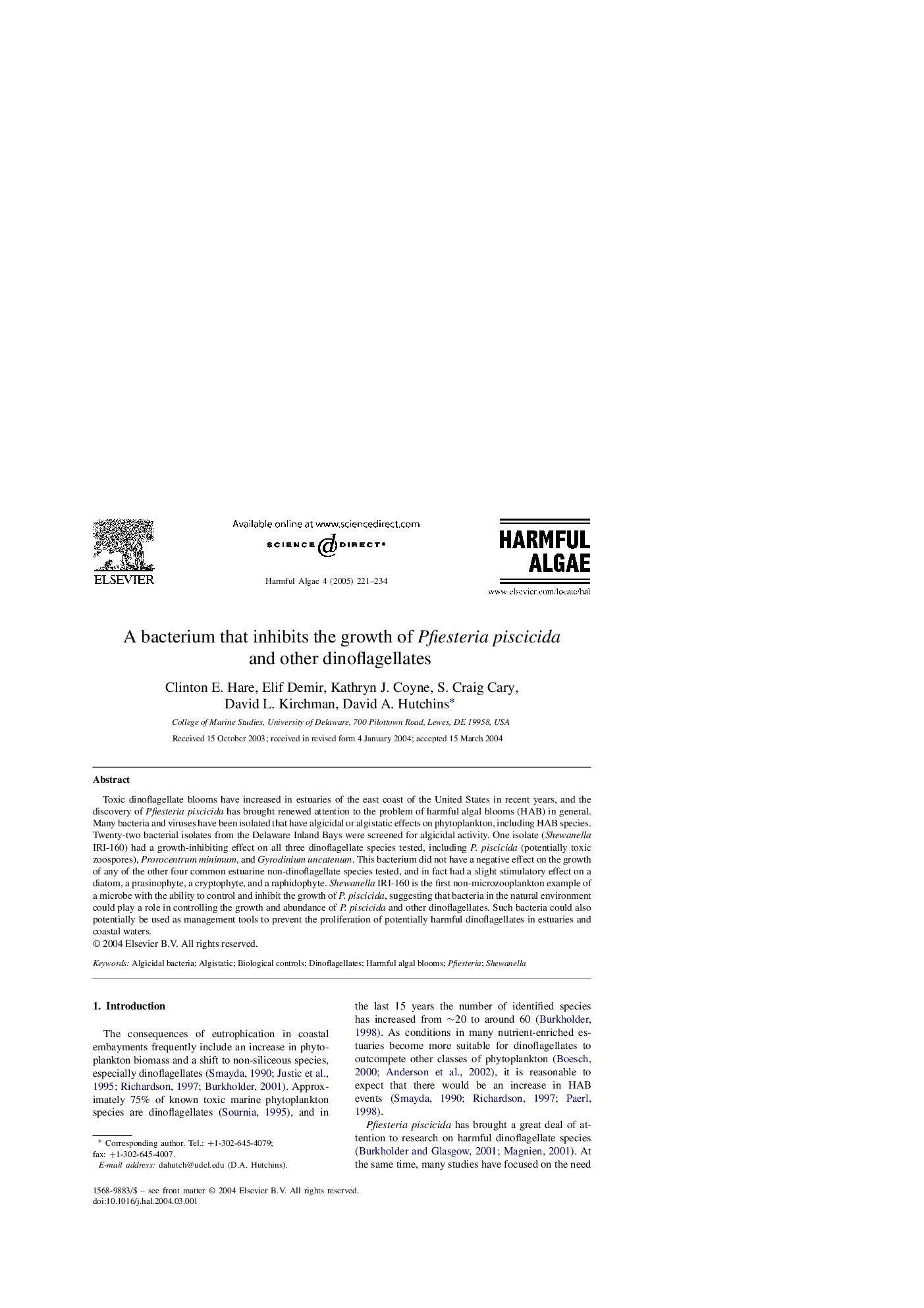| Article ID | Journal | Published Year | Pages | File Type |
|---|---|---|---|---|
| 9482702 | Harmful Algae | 2005 | 14 Pages |
Abstract
Toxic dinoflagellate blooms have increased in estuaries of the east coast of the United States in recent years, and the discovery of Pfiesteria piscicida has brought renewed attention to the problem of harmful algal blooms (HAB) in general. Many bacteria and viruses have been isolated that have algicidal or algistatic effects on phytoplankton, including HAB species. Twenty-two bacterial isolates from the Delaware Inland Bays were screened for algicidal activity. One isolate (Shewanella IRI-160) had a growth-inhibiting effect on all three dinoflagellate species tested, including P. piscicida (potentially toxic zoospores), Prorocentrum minimum, and Gyrodinium uncatenum. This bacterium did not have a negative effect on the growth of any of the other four common estuarine non-dinoflagellate species tested, and in fact had a slight stimulatory effect on a diatom, a prasinophyte, a cryptophyte, and a raphidophyte. Shewanella IRI-160 is the first non-microzooplankton example of a microbe with the ability to control and inhibit the growth of P. piscicida, suggesting that bacteria in the natural environment could play a role in controlling the growth and abundance of P. piscicida and other dinoflagellates. Such bacteria could also potentially be used as management tools to prevent the proliferation of potentially harmful dinoflagellates in estuaries and coastal waters.
Related Topics
Life Sciences
Agricultural and Biological Sciences
Aquatic Science
Authors
Clinton E. Hare, Elif Demir, Kathryn J. Coyne, S. Craig Cary, David L. Kirchman, David A. Hutchins,
